Recent work from the team
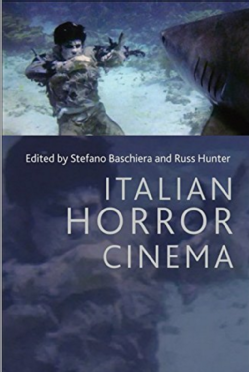
Italian Horror Cinema, edited by Stefano Baschiera and Russ Hunter (Edinburgh University Press, 2016)
In its heyday from the late 1950s until the early 1980s Italian horror cinema was characterised by an excess of gore, violence and often incoherent plot-lines. Films about zombies, cannibals and psychopathic killers ensured there was no shortage of controversy, and the genre presents a seemingly unpromising nexus of films for sustained critical analysis. But Italian horror cinema with all its variations, subgenres and filoni remains one of the most recognisable and iconic genre productions in Europe, achieving cult status worldwide. One of the manifestations of a rich production landscape i in Italian popular cinema after the Second World War, Italian horror was also characterised by its imitation of foreign models and the transnational dimension of its production agreements, as well as by its international locations and stars.
This collection brings together for the first time a range of contributions aimed at a new understanding of the genre, investigating the different phases in its history, the peculiarities of the production system, the work of its most representative directors (Mario Bava and Dario Argento) and the wider role it has played within popular culture.
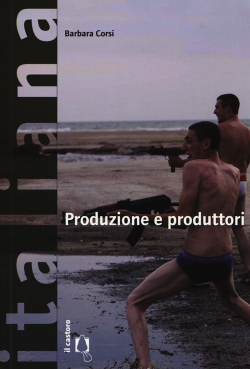
Produzione e produttori, Barbara Corsi (Il castoro, 2012)
Conosciamo i nomi dei produttori soltanto se sposano dive famose o se al cinema ci fermiamo a guardare fino in fondo i titoli di coda. Eppure un film è anche il frutto del loro intuito, della loro abilità imprenditoriale e in definitiva della loro personalità. Nella storia del cinema italiano la figura del produttore ha attraversato fasi alterne, passando dall'artigianato creativo ai successi internazionali, fino a un'eclissi totale che ne ha fatto temere l'estinzione. Ogni volta alla rilevanza del suo ruolo hanno corrisposto i trionfi o le cadute della nostra industria. Questo libro ripercorre l'evoluzione dei modi di produzione italiani dalle origini a oggi e propone un'analisi dalla quale il ruolo del produttore emerge come essenziale alla vitalità dell'industria del cinema: un corresponsabile del progetto insieme all'autore, collettore e mediatore di esigenze artistiche, economiche e commerciali. Molto più di "quello che mette i soldi".
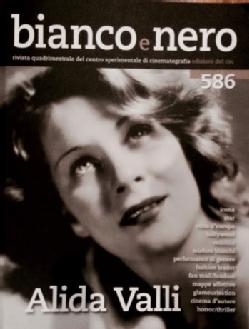
Bianco e Nero 586 (2017), special issue on Alida Valli edited by Stephen Gundle and Mariapia Comand
Alida Valli's long career in Italian, European and Hollywood cinema is explored in a special issue of Bianco e Nero. Many of the articles make use of Valli's private archive, which has recently been donated to the Centro sperimentale in Rome. Through private correspondence, fan letters, cuttings and other material, new insights emerge into her relations with producers, with the public and with a female support group (in particular her longtime assistant and confidante, Bibi Campanella) whose existence was previously unknown to film scholars.
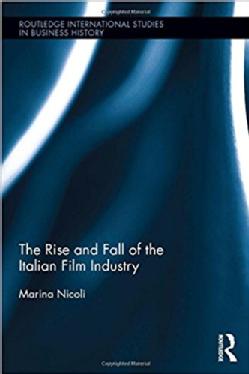
The Rise and Fall of the Italian Film Industry, Marina Nicoli (Routledge, 2017)
Italian cinema triumphed globally in the 1960, with directors such as Rossellini, Fellini, and Leone, and actors like Sophia Loren and Marcello Mastroianni known to audiences around the world. But by the end of the 1980s, the Italian film industry was all but dead. The Rise and Fall of the Italian Film Industry traces the rise of the industry from its origins in the 19th century to its worldwide success in the 1960s, and its rapid decline in the subsequent decades. It does so by looking at cinema as an institution – subject to the interplay between the spheres of art, business, and politics at the national and international level.
By examining the roles of a wide range of stakeholders (including film directors, producers, exhibitors, the public, and the critics) as well as the system of funding and the influence of governments, author Marina Nicoli demonstrates that the Italian film industry succeeded when all three spheres were aligned, but suffered and ultimately failed when they each pursued contradictory objectives. This in-depth case study makes an important contribution to the long-standing debate about promoting and protecting domestic cultures, particularly in the face of culturally dominant and politically- and economically-powerful creative industries from the United States. The Rise and Fall of the Italian Film Industry will be of particular interest to business and economic historians, cinema historians, media specialists, and cultural economists.
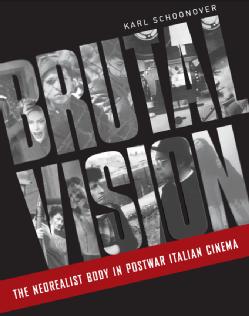
Brutal Vision: The Neorealist Body in Postwar Italian Cinema, Karl Schoonover (University of Minnesota Press, 2012)
How spectacular visions of physical suffering in post–World War II Italian neorealist films redefined moviegoing as a form of political action.
Film history identifies Italian neorealism as the exemplar of national cinema, a specifically domestic response to wartime atrocities. Brutal Vision challenges this orthodoxy by arguing that neorealist films—including such classics as Rome, Open City; Paisan; Shoeshine; and Bicycle Thieves—should be understood less as national products and more as complex agents of a postwar reorganization of global politics.
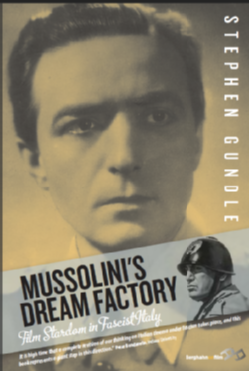 Mussolini's Dream Factory: Film Stardom in Fascist Italy, Stephen Gundle (Berghahn Books, 2013)
Mussolini's Dream Factory: Film Stardom in Fascist Italy, Stephen Gundle (Berghahn Books, 2013)
The intersection between film stardom and politics is an understudied phenomenon of Fascist Italy, despite the fact that the Mussolini regime deemed stardom important enough to warrant sustained attention and interference. Focused on the period from the start of sound cinema to the final end of Fascism in 1945, this book examines the development of an Italian star system and evaluates its place in film production and distribution. The performances and careers of several major stars, including Isa Miranda, Vittorio De Sica, Amedeo Nazzari, and Alida Valli, are closely analyzed in terms of their relationships to the political sphere and broader commercial culture, with consideration of their fates in the aftermath of Fascism. A final chapter explores the place of the stars in popular memory and representations of the Fascist film world in postwar cinema.
